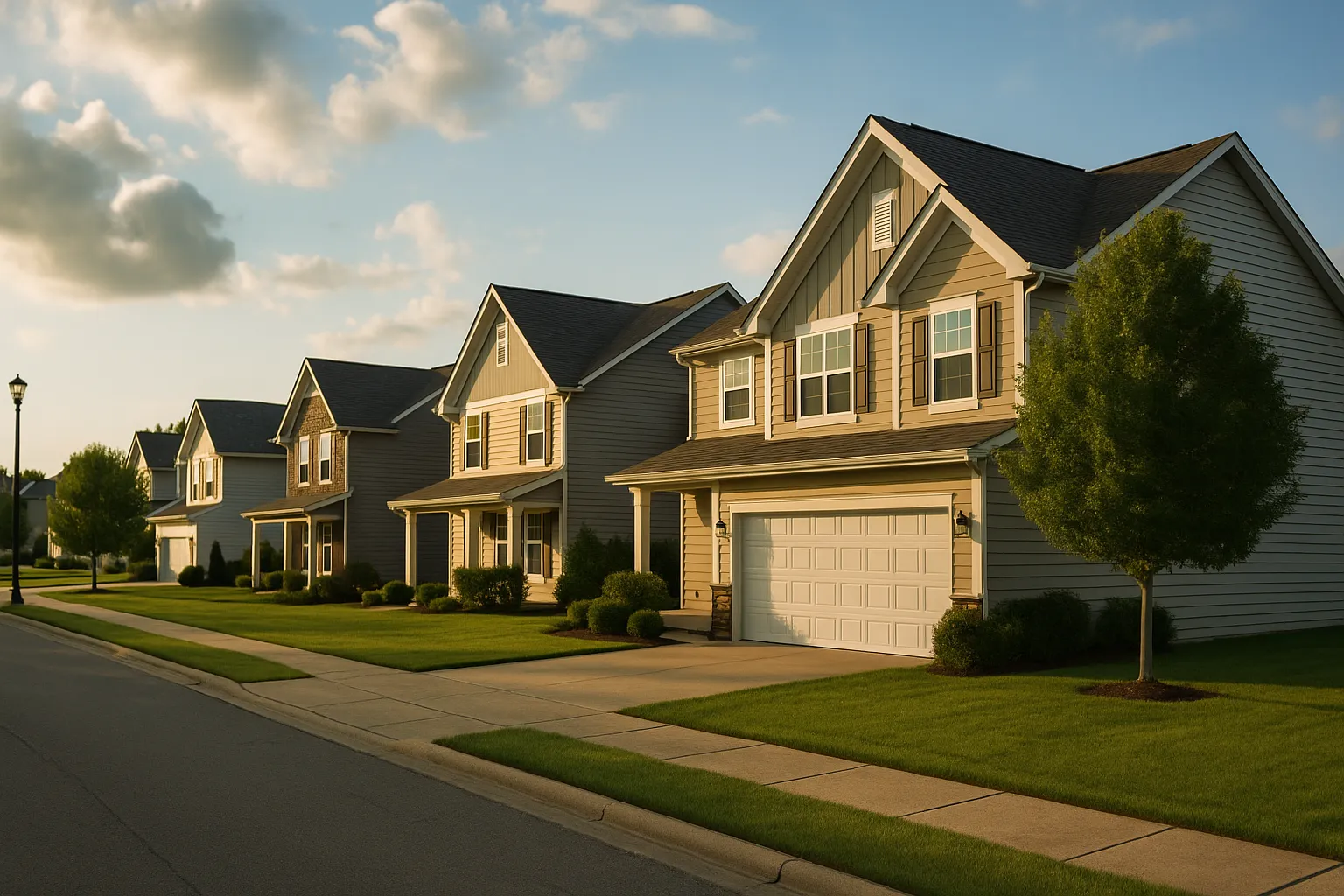As buyer preferences shift post-pandemic, the demand for suburban living is resurging. You’re likely noticing a trend where more individuals prioritize larger homes with dedicated workspaces and outdoor amenities. The rise of remote work has fundamentally altered what buyers want, with functionality now at the forefront. What else is influencing this trend, and how are mixed-use developments shaping suburban settings? Let us explore the factors driving this renewed interest in suburban environments.
Shifts in Buyer Preferences Post-Pandemic
As buyers reassess their needs in the wake of the pandemic, many are prioritizing features that enhance their living experience. A notable 60% of homebuyers are seeking larger homes, reflecting a desire for increased square footage. Demand for private outdoor space, like yards and patios, has surged, particularly among millennials craving a sanctuary at home. Additionally, flexible layouts are gaining traction, allowing rooms to adapt as offices or gyms, catering to evolving lifestyle needs. Suburbs offer more affordable housing and storage solutions also rank high on buyers’ lists, with modern kitchens and open living-dining concepts becoming vital. This shift illustrates a broader trend toward homes that support both work and leisure, emphasizing functionality as a key factor in today’s suburban housing market. As income disparity continues to affect housing options, buyers are increasingly drawn to the affordability that suburban areas provide.
The Impact of Remote Work on Suburban Housing Demand
The rise of remote work has fundamentally reshaped suburban housing demand, driving a significant shift in where people choose to live.
You might notice several key trends emerging:
- Migration from urban centers to suburban and rural areas for housing affordability.
- Increased home prices in suburbs outpacing urban counterparts, creating a 40+ percentage-point gap.
- A demand for larger homes with dedicated office spaces and outdoor areas.
- Fewer daily commutes, making distant suburban living more viable.
- Persistent suburban demand indicating a long-term shift in market expectations.
Additionally, the emphasis on high-speed internet has become critical for remote work setups, further boosting the appeal of suburban homes.
These factors collectively illustrate how remote work hasn’t only influenced buyer preferences but also transformed suburban environments, making them increasingly attractive for those seeking both space and affordability. Additionally, this trend has led to an increased demand for larger homes that accommodate working from home.
The Rise of Mixed-Use Developments in Suburbia
The growth of these developments—up 20% in 2023—reflects a demand for integrated living spaces that combine residential, retail, and recreational options. In addition, mixed-use suburban developments are becoming increasingly popular as suburban areas enhance their connectivity to urban job hubs. As property owners look to capitalize on this trend, the global co-living market is projected to grow, further reducing vacancy rates for these integrated living spaces.
You’ll find that mixed-use benefits include enhanced walkability, reducing car dependency while boosting local economies. Suburban amenities like hospitality-inspired housing and entertainment districts foster vibrant communities, appealing to Millennials and Gen Z who prioritize convenience and sustainability. The “15-minute suburb” model exemplifies this trend, allowing easy access to key services. As these developments continue to thrive, they promise improved quality of life and economic resilience in evolving suburban settings.
Frequently Asked Questions
What Are the Most Popular Suburban Neighborhoods for Homebuyers Today?
Today’s popular suburban neighborhoods prioritize family-friendly amenities and strong local school districts. Buyers are drawn to areas like Frisco, TX, and Cary, NC, where these key features enhance lifestyle and long-term value.
How Are Property Prices Changing in Suburban Areas?
Property prices in suburban areas are rising, reflecting market trends. With affordability concerns growing, you’ll find homes appreciating significantly, driven by increased demand and limited supply, making them attractive compared to urban options.
What Features Make Suburban Homes More Attractive to Buyers?
Suburban homes attract you with spacious outdoor areas for recreation and gardening, plus dedicated home offices for remote work. These features cater to modern lifestyles, enhancing comfort and functionality while ensuring a significant sense of community.
Are There Any Downsides to Living in the Suburbs?
Yes, living in the suburbs can mean facing commute challenges and limited community amenities. Longer travel times and fewer entertainment options might impact your quality of life, making suburban living less appealing for some individuals.
How Is Suburban Infrastructure Evolving to Support New Residents?
Suburban infrastructure is evolving with transportation improvements enhancing accessibility and reducing congestion, while community amenities like mixed-use developments and parks boost quality of life, making suburbs increasingly attractive for new residents seeking convenience and vibrant lifestyles.
References
- https://www.collinsandcompany.info/suburban-come-back
- https://malabarhillcapital.com/suburban-markets-the-new-commercial-hotspots-of-2025/
- https://propertyonion.com/education/from-urban-exodus-to-suburban-surge-real-estate-demographic-shift-in-2025/
- https://www.rentastic.io/blog/2025-real-estate-market-urban-vs-suburban-comparison
- https://www.retailspecialists.com/2025-retail-real-estate-forecast/
- https://irvingparklife.com/2025-housing-market-insights-urban-vs-suburban-living-trends/
- https://therobellermanteam.com/real-estate-blog/real-estate-trends-to-watch-in-2025-what-to-expect-in-the-coming-year/
- https://blog.reination.com/5-years-on-did-the-remote-work-boom-reshape-the-housing-market
- https://www.aanderealty.com/2025/03/04/the-impact-of-remote-work-on-real-estate-trends-and-predictions/
- https://www.ecb.europa.eu/press/blog/date/2025/html/ecb.blog20250108~5b33e426a3.en.html

